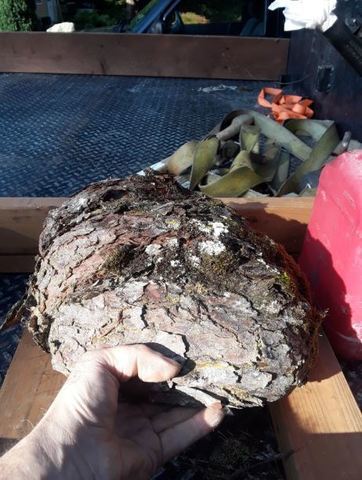Posted By: waggler
Turning duck calls, wood burls?? - 10/10/18 05:58 PM
A long time ago there was a thread on here about turning duck calls out of exotic and unusual woods.
I just got a Alaska Yellow Cedar burl this morning, I've seen really nice duck calls turned out of yellow cedar.
At couple of question; should I let the burl season/dry before I do anything with it, should I end-wax the cut side, remove bark, cut it into blanks first, etc.??


Posted By: schweg2
Re: Turning duck calls, wood burls?? - 10/10/18 11:07 PM
I'm curious also...I have a couple black ash burls I cut a couple years ago that I wanted to have made into bowls.
Now if I could fine somebody that has a lathe and know-how.
Posted By: logger coffey
Re: Turning duck calls, wood burls?? - 10/11/18 12:15 AM
Peel as much bark off as possible , and let dry , you can end seal with wood glue it works like a charm, just about as good as anything. most of them will get alot of pores and small cracks, best way to do it is impregnate with resin, its safer to turn and holds the burl together . alot of how to cure and wood stabilize on youtube . if you get lucky enough that one dont crack up and come apart you can turn without stabilizing, but it is the preferred way. do a little googling and theirs some interesting ways out there . make sure to show us results.
Posted By: Killbuck
Re: Turning duck calls, wood burls?? - 10/11/18 04:46 PM
Soak it in PEG for a month or 2. Wont crack after that!
Posted By: KenaiKid
Re: Turning duck calls, wood burls?? - 10/11/18 05:40 PM
Iíve never done duck calls or burls, but just my experience from milling and woodworking: if you know what youíre going to make out of it, cut it into the smallest pieces possible (i.e. blanks in your case). Smaller pieces dry with less movement since the moisture doesnít have to move as far, which equals less cracking. Smaller pieces also dry faster and more evenly, whether theyíre coated or not. The point of grain-sealing is to prevent the end grain from drying too much faster than the sides, since the goal is even drying. Bark is even worse since it holds a lot of moisture. So I would cut it down to blanks, dip the ends in something thatís semi-permeable like paint, watered-down glue or shellac, and set them up to dry with equal air exposure on all sides. Blanks standing on end would probably work good, since you donít want the end to dry too fast anyway.
The practice of leaving the bark on and end-sealing the grain is used when large pieces are being stored, such as for wholesale when the end product is unknown. If youíre the end-user, cut it down as much as possible.



